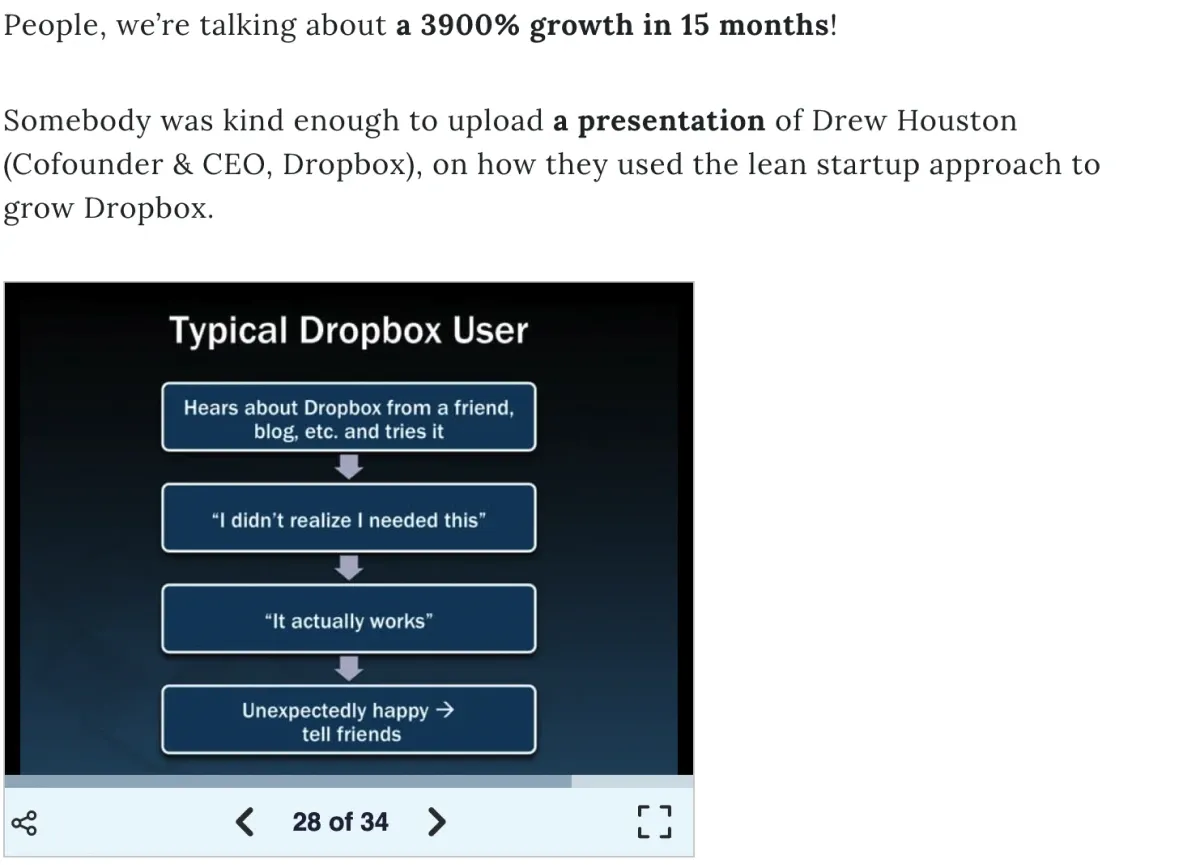Everyone loves virality.
Whether you are a TikToker, an eCommerce site, or a SaaS leader, going viral conjures up dreams of rapid, easy growth.
You will no longer need to pay for ads, salespeople, or marketing campaigns!
Your product is viral; it naturally attracts more users! It’s a magical silver bullet to all of your growth problems! Your growth is capped only by your capacity to onboard new users and fire up new servers.
Ah, you exclaim, if only we could go viral!
Sounds great!
Well, going viral isn’t easy. And virality isn’t something that happens by chance for B2B SaaS products.
Unlike a funny video or a timely TikTok from a celebrity whose contents alone provoke a desire to share, there’s a lot of friction to sharing, evaluating, and onboarding into a SaaS product, which makes going viral harder to achieve. Even the most SaaS-obsessed of us probably don’t find ourselves sharing random products on a daily basis (though some influencers might come close on LinkedIn and Twitter!).
But does virality actually matter for B2B SaaS products? Let’s dig in.
What is the viral coefficient?
One thing that is easy to measure is your current virality. We use a metric called a viral coefficient to understand your product's virality. This is sometimes called your “K-factor,” which draws upon ideas from the study and transmission of viral diseases.
The calculation is easy enough:
Viral Coefficient = # of Invites Sent By Each User / Conversion Rate of Those Invites

Let’s run through an example.
Say you’ve got 100 early users of your product (nice!)
On average, each user invites 8 new people to the product.
On average, 20% of invited users accept

In this example, you’ve got a viral coefficient of 1.6.
But is that good, bad, or average?
Benchmarks for viral coefficients
To go viral, your K needs to be above 1, obviously. Without that, each user is attracting less than 1 new user into your product, and you’re not seeing predictable and positive growth.
Let’s break this down into buckets for ease:
Below 0.5
Sorry, buddy, you’re probably not going viral. If your viral coefficient is less than 0.5, each user brings in less than half a new user on average. This level suggests minimal virality and signifies that the product relies heavily on other forms of marketing and growth strategies outside of organic or viral growth.
0.5 to 1.0
You are moderate viral. Your product is somewhat shared, and you are bringing in new users. You can likely achieve some level of organic growth, but it's not enough for exponential growth because every user is bringing in “part” of a new user, but not at 1+ ratio.
You may still have viral potential, and there are some tactics you can use to improve your K.
1.0 and up
You’re going viral! 😎 When your K is above 1, each existing user brings in over one new user on average. This is hugely positive! Obviously, the further you get above 1, the better!
Benchmarking for B2B SaaS averages
There’s not a lot of hard data on averages since most start-ups are private companies that aren’t required to share their exact growth numbers. Plus, many B2B SaaS products land below even the 0.5 range because their products are simply not optimized for virality.
That said, a general rule of thumb for a B2B Saas product is that a K-factor over 0.2 is quite good!
But let’s run through some examples so you can see the ranges.
Viral coefficiency in different B2B products
Going viral with a B2B product is harder than a B2C one because the market is inherently smaller and more niche. But it’s possible! An interesting report from Saxifrage detailed the viral coefficients from various companies.
On the high end, companies like Slack and Dropbox had massive viral coefficiency, with numbers way above 1 (Slack hit 8.5 at one point!)


On the other hand, hypersuccessful companies like Square only had a K of 0.01, and still did tremendously well.
Boosting your product’s virality
One of the biggest takeaways from this viral success was how integrated virality was into the onboarding process. Inviting other people wasn’t an afterthought in the product, nestled between settings and billing.
It was a core part of Dropbox's onboarding flow, the final step before gaining access. When you join Slack, you are immediately prompt to add team members, create channels, share them, etc.
In addition to making viral sharing a core part of the onboarding process, better in-app messaging prompts for social sharing and referral can improve your K-factor and boost your overall virality.
One way we've seen our customers do this is through follow-on nudges for social sharing after a high NPS score or very positive survey

You can store the NPS result as a custom property / metadata tied to this user, and later serve them a referral nudge!

Does viral potential actually matter for B2B SaaS?
I'm not convinced that viral potential matters that much for B2B SaaS products, but I do think it can be a powerful growth loop for a certain category of products.
Products that rely on collaboration and/or those that become more useful as more people from your team, community, or industry join are obvious candidates for viral sharing.
Regardless, creating a dedicated section of your onboarding for referral (with incentives!) and using smart-targeted in-app messaging can help any B2B SaaS product improve its viral potential without overly harming the UX or annoying the user.
While you shouldn't depend on virality for your business's growth, you can still find ways to increase your coefficient and produce incremental growth.















